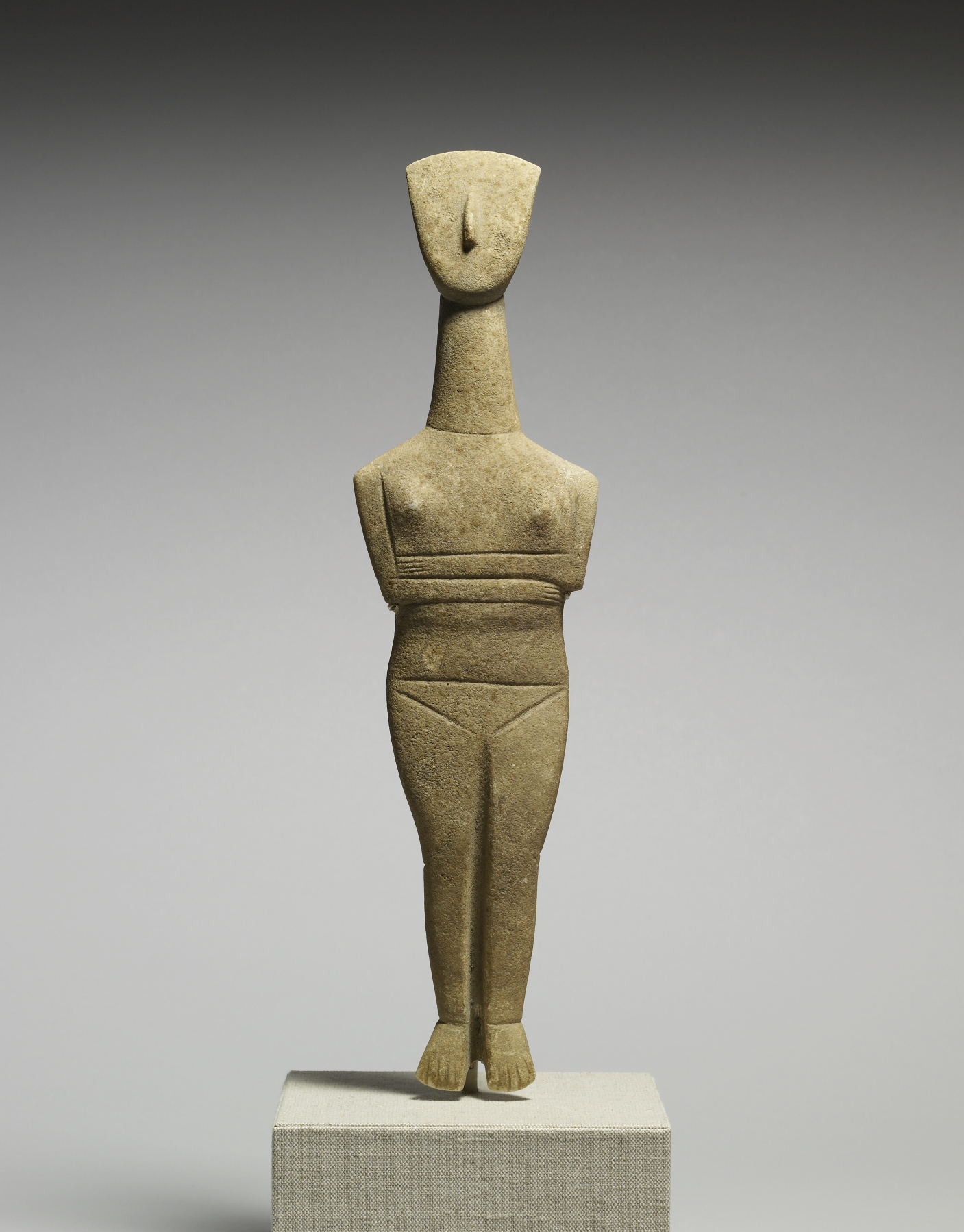Female Figure
(Ancient Greece )
Figurines of this type, from the Cyclades islands in the Aegean Sea, have been found almost exclusively in tombs. Although it was first believed that these so-called "idols" represent deities, they probably should be interpreted more broadly as representations of "femaleness." The geometric shapes, the position of the arms across the abdomen, and the close-set legs with dangling feet are distinctive and may appear strikingly modern to the viewer today. This example represents the high point of Cycladic figurine carving, when the form had become extremely elegant.
Provenance
Provenance (from the French provenir, 'to come from/forth') is the chronology of the ownership, custody, or location of a historical object. Learn more about provenance at the Walters.
Henri Seyrig, 1950s or 1960s [mode of acquisition unknown]; Herbert A. Cahn, Basel, Switzerland [date and mode of acquisition unknown]; Walters Art Museum, 1993, by purchase.
Exhibitions
| 2018 | Odyssey: Jack Whitten Sculpture, 1963 - 2016. Baltimore Museum of Art, Baltimore; The Met Breuer, New York. |
| 2006 | Early Cycladic Art. Katonah Museum of Art, Katonah. |
Conservation
| Date | Description | Narrative |
|---|---|---|
| 10/26/1992 | Examination | technical study |
| 9/19/1996 | Examination | examined for loan |
| 6/26/2001 | Treatment | cleaned; other |
| 2/14/2005 | Loan Consideration | examined for loan |
Geographies
Greece, Cyclades (Place of Origin)
Measurements
H: 16 5/16 x W: 4 3/16 x D: 1 1/2 in. (41.5 x 10.7 x 3.75 cm)
Credit Line
Museum purchase, 1993
Location in Museum
Accession Number
In libraries, galleries, museums, and archives, an accession number is a unique identifier assigned to each object in the collection.
In libraries, galleries, museums, and archives, an accession number is a unique identifier assigned to each object in the collection.
23.253


